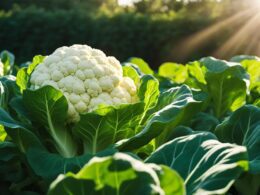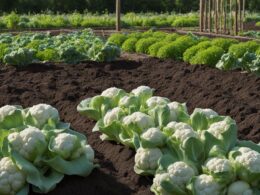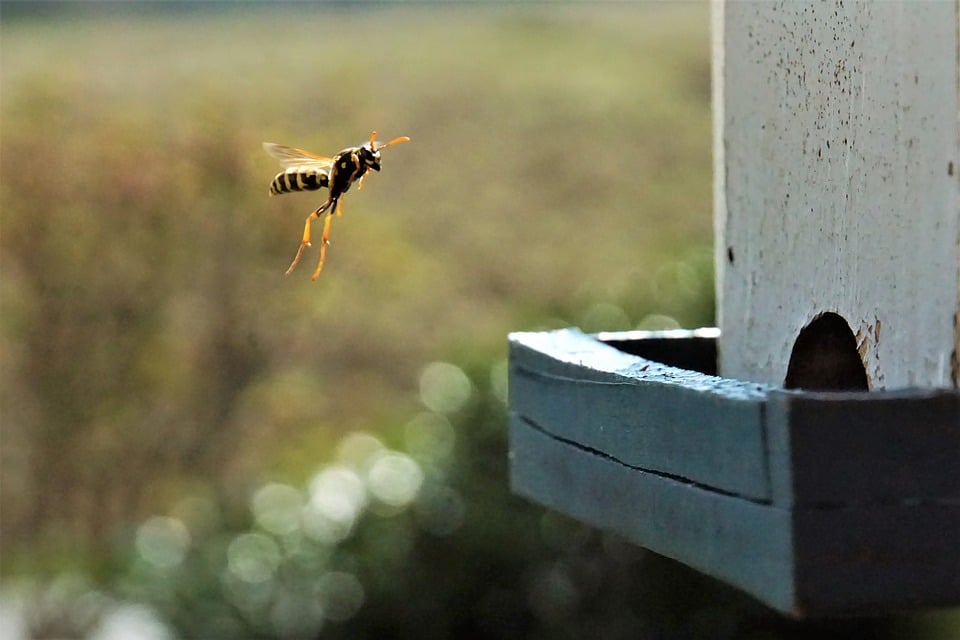Looking to fill your raised garden bed without breaking the bank? You’ve come to the right place! In this article, we’ll show you how to fill your garden bed for cheap while ensuring safety and success.
First, determine the size and depth of your garden bed. This will help you estimate the amount of soil and compost you’ll need.
Next, use a combination of soil and compost to provide the necessary nutrients for your plants. Consider adding organic matter, such as leaves or grass clippings, to improve soil fertility.
To save money, explore alternative fillers like straw or wood chips. These can help bulk up your garden bed without breaking the bank.
Don’t forget to utilize natural amendments, such as bone meal or fish emulsion, to further enrich your soil.
Additionally, consider DIY compost options to recycle kitchen scraps and yard waste. Taking advantage of local resources, like municipal compost or free manure from nearby farms, can also save you money.
Finally, plan for future soil improvement by rotating crops and cover cropping. By following these tips, you can fill your raised garden bed for cheap while ensuring a safe and thriving gardening experience.
Quick Summary
- Use soil and compost for nutrients
- Consider adding organic matter like leaves or grass clippings
- Explore alternative fillers like straw or wood chips
- Utilize natural amendments like bone meal or fish emulsion
Determine the Size and Depth of Your Garden Bed
Before you start building your raised garden bed, it’s essential to determine the size and depth that will best suit your gardening needs.
To calculate the amount of soil needed for your garden bed, you’ll need to consider its dimensions. Measure the length and width of the area where you plan to place the garden bed. Once you have these measurements, multiply them together to find the total square footage. This will give you an idea of how much soil you’ll need to fill it.
Next, think about the depth of your garden bed. Most raised beds are around 12 inches deep, which is sufficient for growing a variety of plants. However, if you plan on growing root crops or plants with deep root systems, you may want to consider a deeper bed.
When choosing the right materials for garden bed construction, consider using untreated lumber or cedar boards. These materials are durable and resistant to rot, ensuring that your garden bed will last for years to come. Avoid using pressure-treated wood, as it may contain harmful chemicals that can leach into your soil.
By determining the size and depth of your garden bed and selecting the appropriate materials, you can ensure a successful and cost-effective gardening experience.
Use a Combination of Soil and Compost
To save money, you can mix soil and compost to create a perfect blend for your raised garden. Using raised garden bed kits is a great way to start, but filling them with expensive topsoil can quickly add up. Instead, consider using alternative materials to fill your garden beds.
One option is to use a combination of soil and compost. Soil provides the necessary nutrients and stability, while compost adds organic matter and improves drainage. Start by filling the bottom of the raised bed with a layer of soil. Then, add a layer of compost on top, making sure to mix it well with the soil. Repeat this process until the bed is filled to the desired depth.
Using a combination of soil and compost not only saves money, but it also creates a healthy environment for your plants. The compost enriches the soil, supplying essential nutrients that promote growth. Additionally, the organic matter in the compost helps retain moisture, reducing the need for frequent watering.
By using this method, you can create a cost-effective and safe raised garden bed. Remember to choose high-quality soil and compost to ensure the best results. Happy gardening!
Consider Adding Organic Matter
If you’re looking to add organic matter to your raised garden bed, consider using grass clippings or leaves. These natural materials can be easily obtained for free and provide essential nutrients to your soil.
Additionally, don’t forget to utilize kitchen scraps and coffee grounds, which are great sources of organic matter and can be easily incorporated into your garden bed.
Use Grass Clippings or Leaves
Sprinkle grass clippings or leaves into your raised garden bed, creating a lush and organic foundation. This not only adds nutrients to the soil but also helps with moisture retention. Using grass clippings or leaves is an inexpensive and eco-friendly way to fill your garden bed.
It’s important to ensure that the grass clippings or leaves are free from any chemicals or pesticides that could harm your plants. To further enhance the soil, consider using wood chips as a layer on top of the grass clippings or leaves. Wood chips help to retain moisture and prevent weed growth.
Another option is to utilize newspaper as a weed barrier before adding the grass clippings or leaves. This will help to suppress weed growth and create a healthier environment for your plants.
By incorporating these materials, you can create a cheap and sustainable foundation for your raised garden bed.
Utilize Kitchen Scraps and Coffee Grounds
Transform your kitchen scraps and coffee grounds into a nutrient-rich feast for your plants, providing them with the sustenance they crave and ensuring their vibrant growth. Recycling kitchen scraps is not only eco-friendly but also a cost-effective way to fill your raised garden bed.
Instead of throwing away vegetable peels, fruit scraps, and eggshells, repurpose them for your garden. Simply chop them into smaller pieces to speed up the decomposition process.
Coffee grounds are another fantastic addition to your garden bed. They not only add nitrogen to the soil but also improve its drainage and increase its acidity, which is beneficial for acid-loving plants like tomatoes. However, be cautious while using coffee grounds as they can increase the caffeine levels in the soil, which may be harmful to some plants. So, use them sparingly to avoid any negative effects.
By utilizing your kitchen scraps and coffee grounds, you can create a thriving garden bed without breaking the bank.
Explore Alternative Fillers
Consider using shredded leaves and grass clippings to fill your raised garden bed, creating a rich and natural environment for your plants to thrive. Not only are shredded leaves and grass clippings readily available and budget-friendly options, but they also offer numerous benefits for your garden.
-
Shredded leaves:
- Retain moisture: They act as a natural mulch, helping to retain moisture in the soil and reduce evaporation.
- Improve soil structure: As shredded leaves decompose, they add organic matter to the soil, improving its structure and fertility.
-
Grass clippings:
- Provide nitrogen: Grass clippings are rich in nitrogen, which is an essential nutrient for plant growth.
- Suppress weeds: A layer of grass clippings can help suppress weed growth by blocking sunlight and preventing weed seeds from germinating.
Using shredded leaves and grass clippings as alternative fillers not only saves you money but also helps create a safe and sustainable garden environment. It’s important to ensure that the leaves and grass clippings you use are free from pesticides or herbicides, as these chemicals can harm your plants and contaminate your produce. Additionally, make sure to properly compost the materials before using them in your raised garden bed to prevent any potential issues with pathogens or weed seeds. By incorporating these alternative fillers, you can create a thriving garden while staying within your budget and maintaining a safe environment for your plants.
Utilize Natural Amendments
To enhance the health and fertility of your garden, you can use natural amendments to enrich the soil and promote optimal plant growth. One effective way to achieve this is by utilizing natural mulch. Natural mulch, such as straw, leaves, or grass clippings, not only helps retain moisture in the soil but also prevents weed growth and adds nutrients as it breaks down over time.
By spreading a layer of natural mulch around your plants, you can create a protective barrier that keeps the soil moist and nourished.
Another cost-effective option is to make your own homemade fertilizer. You can create a nutrient-rich fertilizer by composting kitchen scraps, yard waste, and other organic materials. Composting not only reduces food waste but also produces a valuable resource for your garden.
Simply gather your organic materials in a compost bin or pile and let nature do its work. Over time, the organic matter will decompose, turning into nutrient-rich compost that can be added to your raised garden bed.
Using natural amendments like natural mulch and homemade fertilizer not only saves money but also promotes a healthier and safer garden environment. By incorporating these natural methods, you can ensure that your garden thrives while minimizing the use of harmful chemicals.
So start enriching your soil with natural amendments and watch your plants flourish!
Should I Remove Mulch When Filling a Raised Garden Bed?
When filling a raised garden bed, mulch removal considerations may arise. While it is not necessary to remove all existing mulch, it is advisable to clear the area where the bed will be placed. Removing excess mulch helps prevent weed growth and allows the soil to directly interact with the plants, ensuring optimal growth and nutrient absorption.
Can I Use Concrete Pavers to Fill a Raised Garden Bed Instead of Dirt?
If you’re wondering whether installing concrete pavers on dirt is a suitable alternative to filling a raised garden bed with dirt, the answer is yes! Concrete pavers are a perfect solution as they provide a sturdy and level base for your plants. With proper drainage, they can effectively replace traditional dirt, offering stability and durability for your garden.
Consider DIY Compost Options
If you’re looking for a cheap and effective way to fill your raised garden bed, consider starting a compost pile or bin. This allows you to recycle organic waste from your kitchen and yard, turning it into nutrient-rich compost for your garden.
Another option to explore is worm composting, which involves using worms to break down organic matter and create high-quality compost.
Both of these DIY compost options are cost-effective and environmentally friendly ways to nourish your garden.
Start a Compost Pile or Bin
Begin by setting up a compost pile or bin, so you can easily recycle kitchen scraps and yard waste into nutrient-rich soil for your raised garden bed. Starting a compost pile is easy and has numerous benefits. Not only does it reduce waste going to the landfill, but it also provides you with free, organic soil amendment for your garden.
To start composting, choose a suitable location for your pile or bin, preferably in a sunny spot with good drainage. Layer your compost materials, alternating between green (nitrogen-rich) and brown (carbon-rich) materials. Make sure to turn the pile regularly to aerate it and speed up the decomposition process.
Remember to avoid adding meat, dairy, or oily food scraps to prevent attracting pests. With a well-maintained compost pile, you’ll have a steady supply of nutrient-rich soil for your raised garden bed.
Utilize Worm Composting
Enhance your composting efforts by utilizing worm composting, where red worms transform organic waste into nutrient-rich castings for your garden. Worm farming, also known as vermicomposting, is an efficient and cost-effective way to fill your raised garden bed.
To start, create a worm bin using a plastic container with small holes for ventilation. Line the bottom with shredded newspaper or cardboard for bedding. Add your kitchen scraps, such as fruit and vegetable peelings, coffee grounds, and eggshells, as food for the worms. Remember to avoid dairy products, meat, and oily foods, as they can attract pests.
Place the red worms on top of the bedding and cover them with damp newspaper. Keep the bin in a cool, shady area and regularly add food scraps while ensuring the bedding remains moist.
In no time, your worms will produce nutrient-rich castings that you can use to fill your raised garden bed. Happy vermicomposting!
Take Advantage of Local Resources
If you’re looking for cheap options to fill your raised garden bed, you should consider taking advantage of local resources.
Contact local farms or nurseries to see if they have any compost or mulch available. They may have excess materials that they’re willing to give away or sell at a low cost.
Additionally, look for community composting programs in your area. These programs often offer free or discounted compost that you can use to fill your garden bed.
Contact Local Farms or Nurseries for Compost or Mulch
Check with nearby farms or nurseries to score some free or discounted compost or mulch for your raised garden bed. Local farms and nurseries often have excess compost and mulch that they’re willing to give away or sell at a reduced price. This can be a great way to fill your raised garden bed without breaking the bank.
When contacting farms or nurseries, make sure to ask about the source and quality of the compost or mulch to ensure it’s safe for your garden. You want to avoid using any materials that may contain harmful chemicals or pathogens. Additionally, ask about any specific instructions for using the compost or mulch to maximize its benefits and promote the health of your plants.
By reaching out to local farms and nurseries, you can find affordable and safe materials to fill your raised garden bed.
Look for Community Composting Programs
If reaching out to local farms or nurseries didn’t yield the results you were hoping for, don’t worry! There’s another cost-effective option you can explore to fill your raised garden bed. Look for community composting programs in your area.
These programs are a great way to obtain organic matter for your garden without breaking the bank. Here are three benefits of community composting programs:
-
Abundant supply: Community composting programs often have a surplus of compost available, ensuring you can get the amount you need for your raised garden bed.
-
Quality assurance: Compost from community composting programs is typically tested and regulated, so you can rest assured that it meets safety standards for your plants.
-
Supporting local initiatives: By participating in community composting, you contribute to the sustainability efforts of your community gardens and promote backyard composting practices.
Take advantage of these programs to fill your raised garden bed affordably while also supporting your local community and enjoying the benefits of organic gardening.
Plan for Future Soil Improvement
To make your garden thrive in the future, you’ll want to think about how to improve the soil.
Future soil testing is an essential step to ensure the health and productivity of your garden. By testing the soil, you can determine its nutrient content and pH level, allowing you to make informed decisions about what amendments to add. This will help you provide the optimal conditions for your plants to grow and flourish.
Another strategy to consider for future soil improvement is crop rotation. Crop rotation involves changing the location of your plants each year to prevent the buildup of pests and diseases in the soil. By rotating your crops, you can interrupt the life cycle of pests and reduce the risk of soil-borne diseases. This practice also helps maintain soil fertility by preventing the depletion of specific nutrients.
When planning for future soil improvement, it’s important to prioritize the safety of your garden and the food you’ll be growing. Choose organic amendments and fertilizers that are free from harmful chemicals and contaminants. By using natural and organic methods, you can ensure that your garden remains safe and healthy for both you and the environment.
Remember, investing time and effort into improving your soil now will pay off in the future. Your garden will thrive, and you’ll enjoy bountiful harvests year after year.
Frequently Asked Questions
What are the benefits of using a raised garden bed?
Raised garden beds offer several benefits and advantages. They provide better soil drainage, prevent soil compaction, and reduce the risk of weeds and pests. They also make gardening more accessible and allow for better control over soil quality.
How do I determine the best location for my raised garden bed?
To determine the best location for your raised garden bed, look for a spot with the best soil and proper drainage. Make sure it receives adequate sunlight and is away from any hazards or obstructions.
Can I use regular garden soil instead of a soil and compost combination?
Using regular garden soil in a raised bed has benefits like being readily available and cheaper. However, it may lack nutrients and drainage. To ensure healthy plants, consider a mix of soil and compost for optimal results.
What are some examples of organic matter that can be added to the raised garden bed?
To add organic matter to your raised garden bed, you can use composting materials like kitchen scraps, leaves, and yard waste. Grass clippings are also a great option, but make sure they are free of pesticides or herbicides for safety.
Are there any specific natural amendments that work well for raised garden beds?
Yes, there are several natural amendments that work well for raised garden beds. Some cost-effective methods include using compost, aged manure, or organic fertilizers to enrich the soil and provide essential nutrients for your plants.
Conclusion
So there you have it! By following these tips, you can fill your raised garden bed for cheap without compromising on the quality of your soil.
Remember to determine the size and depth of your bed, use a combination of soil and compost, consider adding organic matter, explore alternative fillers, utilize natural amendments, consider DIY compost options, take advantage of local resources, and plan for future soil improvement.
With these strategies in place, you’ll be well on your way to a thriving garden without breaking the bank. Happy gardening!








